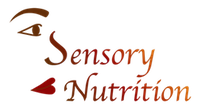 Earlier this month, we mentioned in our December 2012 Potpourri blog post that an iPhone app was coming for the Low FODMAP Diet.
Earlier this month, we mentioned in our December 2012 Potpourri blog post that an iPhone app was coming for the Low FODMAP Diet.
That diet approach has come out of research work done at Monash University in Melbourne, Australia (designed to help manage gastrointestinal symptoms).
On 17DEC2012, the researchers at Monash University in Australia sent out a press release about their new app called the Monash University Low FODMAP Diet (by CEMA, Monash University) which can be found in the iTunes Store.
Graphic source: Dreamstime.com
You can download version 1.0 of the app optimized for iPhone 5 through the iTunes Store for >$10USD. Reportedly, the app will also work on 3rd, 4th, and 5th generation iPods, as well as on iPads. A version of the app for Android devices is reportedly scheduled for release in 2013. Researchers at Monash University apparently intend to update the iPhone app every 12 months and monies raised by the sales of the app will go directly into continuing research in the Dept. of Gastroenterology at Monash University.
You can see some screen shots from the app on iosnoops.com and if you would like to see a short video released by Monash University about the background on the development of the app as described by those instrumental in conducting some of the ongoing research that led to its release, you can do so on youtube.
The youtube video features Professor Peter Gibson (Professor and Director of Gastroenterology at Alfred Hospital, Monash University) and Dr. Jane Muir (Head of Translational Nutrition Science, Dept. of Gastroenterology, Monash University) who have overseen the research involved in measuring the FODMAP content of food items.
Professor Gibson notes that the Low FODMAP Diet that has been developed is based upon peer-reviewed, evidence-based research. “All foods have been tested carefully and scientifically measured so the information is entirely accurate and not based on guess work or anecdotal evidence.” Dr. Muir has gone on to say “A smartphone application is an ideal way of delivering information to where it’s needed – to IBS patients, health professionals and scientists in the field.” The video also features Dr. Jaci Barrett, Research Dietitian, Dept. of Gastroenterology, Monash University, further discussing using the app.
Ever since the publication of an article in a major journal of gastroenterology came out, the growth of interest in the Low FODMAP diet for the potential it may hold in helping to treat symptoms of persons coping with Irritable Bowel Syndrome (IBS) has gone “viral” so-to-speak. Gibson PR, Shepherd SJ. Evidence-based Dietary Management of Functional Gastrointestinal Symptoms: The FODMAP Approach. J Gastroenterol Hepatol. 2010;25:252-258. That article was followed up by one this year: Gibson PR, Shepherd SJ. Food choices as a key management strategy for functional gastrointestinal symptoms. Am J Gastroenterology 2012;107:657-666.
IBS is often treated using medications; stress reduction; and specific, targeted food intake protocols that should be managed under the guidance of health care team professionals.
IBS frequently involves abdominal pain and cramping as well as changes in bowel movements and is often accompanied by symptoms that can include bloating, constipation and/or diarrhea, gas, pain, etc. Other symptoms may include anxiety, depression, early satiety, fatigue, gastroesophageal reflux disease symptoms (GERD), headaches, loss of appetite, nausea/vomiting, poor nutrient absorption, etc. Because such symptoms may come and go and at times be vaguely described by those experiencing them, it can be difficult for physicians to diagnose IBS, so it is usually considered to be a diagnosis of exclusion.
At Monash University, staff involved with Medicine, Nursing and Health Sciences have since the 1990s looked in great detail at the short-chain carbohydrate fermentable sugar content of various fruits, grains, nuts and vegetables that might in part be responsible for some of these symptoms. At that time, Dr. Sue Shepherd was doing research toward her doctorate and the resultant thinking after considering her research efforts led to the birth of the Low FODMAP Diet approach to IBS management.
FODMAPs stands for the fermentable oligosaccharides (fructans and galactans), disaccharide (lactose), monosaccharide (fructose) and polyols (sugar alcohols) content of food items. Typically, FODMAPs are poorly absorbed in the small intestine of many individuals with functional gut disorders such as IBS and may then be digested or fermented by bacteria in the large intestine, resulting in undesirable gas production.
An approach of removing such FODMAPS from the diet through a restrictive elimination protocol and then gradually adding some back in while documenting patient progress all under the supervision of a medical team that includes a physician and a *qualified* dietitian/nutritionist has been shown to be effective in improving IBS symptoms of ~70 – 75% of those treated. *Qualified via both accredited degree and national registration and/or state certification in the US and similar credentialing elsewhere in the world.
The Low FODMAP Diet app uses a simple, globally accepted traffic light system whereby:
- RED food items are flagged as being high in FODMAP content and generally should be avoided by most persons with IBS symptoms although individual sensitivity levels to the various FODMAPS contained within the food items can vary from person to person
- ORANGE food items are flagged as being of moderate FODMAP content and may be tolerated by some persons with IBS symptoms, although serving sizes may need to be limited
- GREEN food items are flagged as being considered low in FODMAPs and should be tolerated by most persons with IBS symptoms and thus are considered “safe” for consumption in typical serving sizes.
Included in the 90.2 MB size app are a:
- booklet about FODMAPs from Monash University that includes their guide to the FODMAP content of hundreds of food items from the database maintained and constantly updated at Monash University;
- recipe book that includes 79 high-quality tested recipes that are Australian favorites, with full color professional photography for each recipe;
- shopping list to help people organize potential purchases of low FODMAP food items;
- 1 week “challenge” diet to be used in conjunction with input from medical team members, including a qualified dietitian/nutritionist whereby a person can have their symptoms during the week of the challenge graphed and thus can better discuss them in detail with their health care team member providers. A filter is provided in the app to allow the user to make adjustments based on their sensitivity (none, medium, high) to various FODMAP components.
As Dr. Jacquie Barrett notes in the youtube video, “the FODMAP elimination diet is not meant to be followed long-term” and she suggests that seeking professional advice from a qualified dietitian/nutritionist will go a long way towards management of a person’s symptoms and overall health going forward.
For some additional resources pertaining to the Low FODMAP Diet approach, please also see our December 2012 Potpourri blog post.


is italian sweet cream coffeemate allowed on elimation diet
As the Monash Univ. affiliated staff mention in their advisements, the entire low FODMAP dietary protocol is meant to be implemented by a physician and dietitian-nutritionist team. The dietitian-nutritionist should have previously completed low FODMAP dietary protocol training. The Low FODMAP booklet released by Monash U, as well as their app based on same, are the result of their research work analyzing the FODMAP content of versions of food items found primarily in Australia. Values that they publish for FODMAP content are based on exact items in specific amounts. Both actual item (by brand, variety and country of origin) and amount are important for the Monash U traffic light system regarding potential disallowed or allowed intake.
A low FODMAP dietary protocol trained registered dietitian-nutritionist (RDN) in the USA will typically be a Gastro RDN. That RDN will review a client’s detailed pre-elimination food item & symptom record and then provide guidance regarding the use of particular food items in specific amounts working with a client for the elimination phase of the dietary protocol. The RDN will later advance the client prudently through food challenges in each of the 5 FODMAP classes based on that RDN’s expertise and knowledge of the individual client’s situation and history and taking into account client’s symptoms as the challenges progress.
Following a prudent team approach of a MD-RDN team is the only approach with an evidence-basis at this time.
Please consult your RDN team member here in the USA regarding your dietary intake and s/he can advise you & educate you accordingly through ALL of the phases if the decision is made to implement the low FODMAP dietary protocol which is a learning protocol after all.